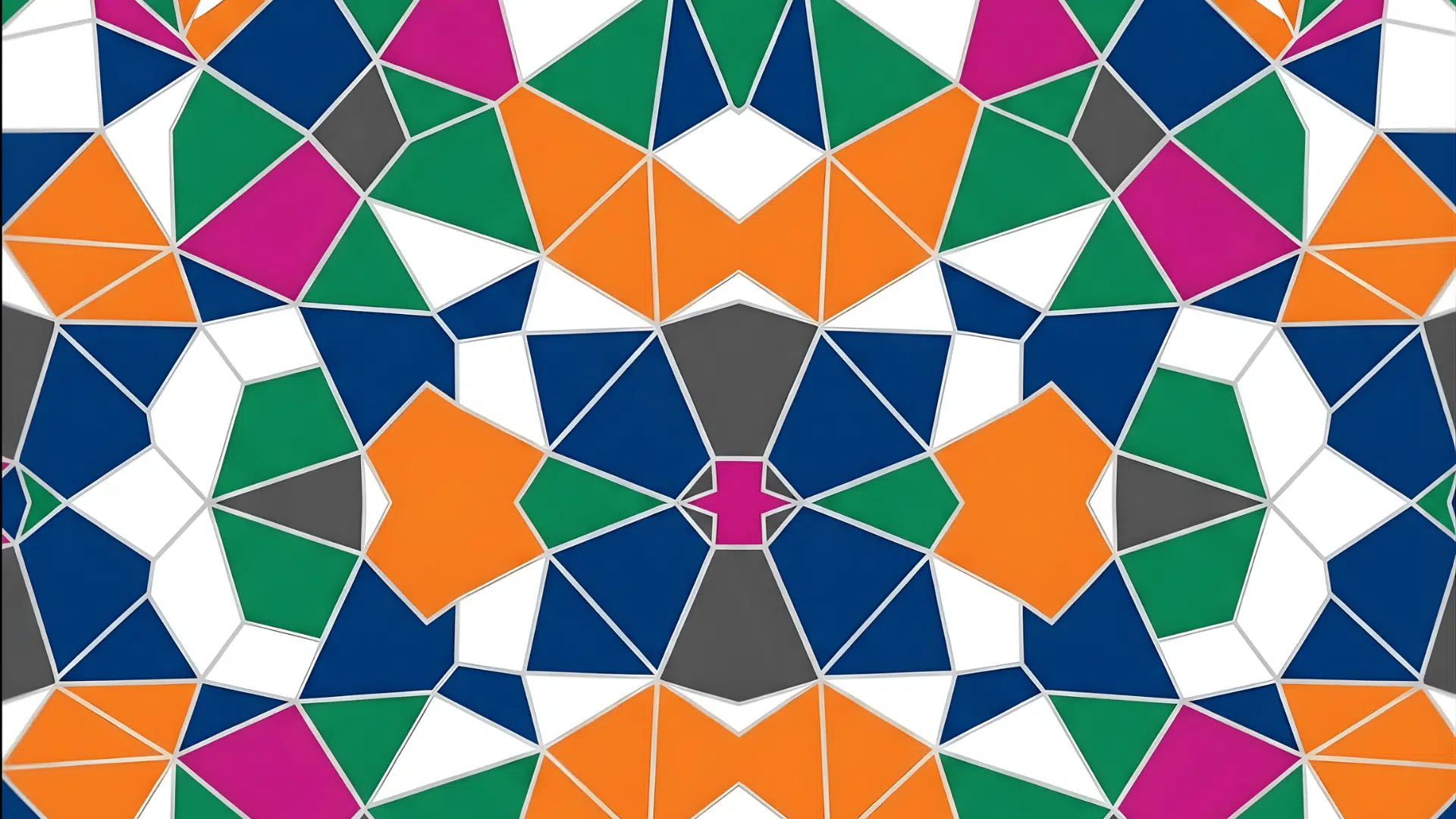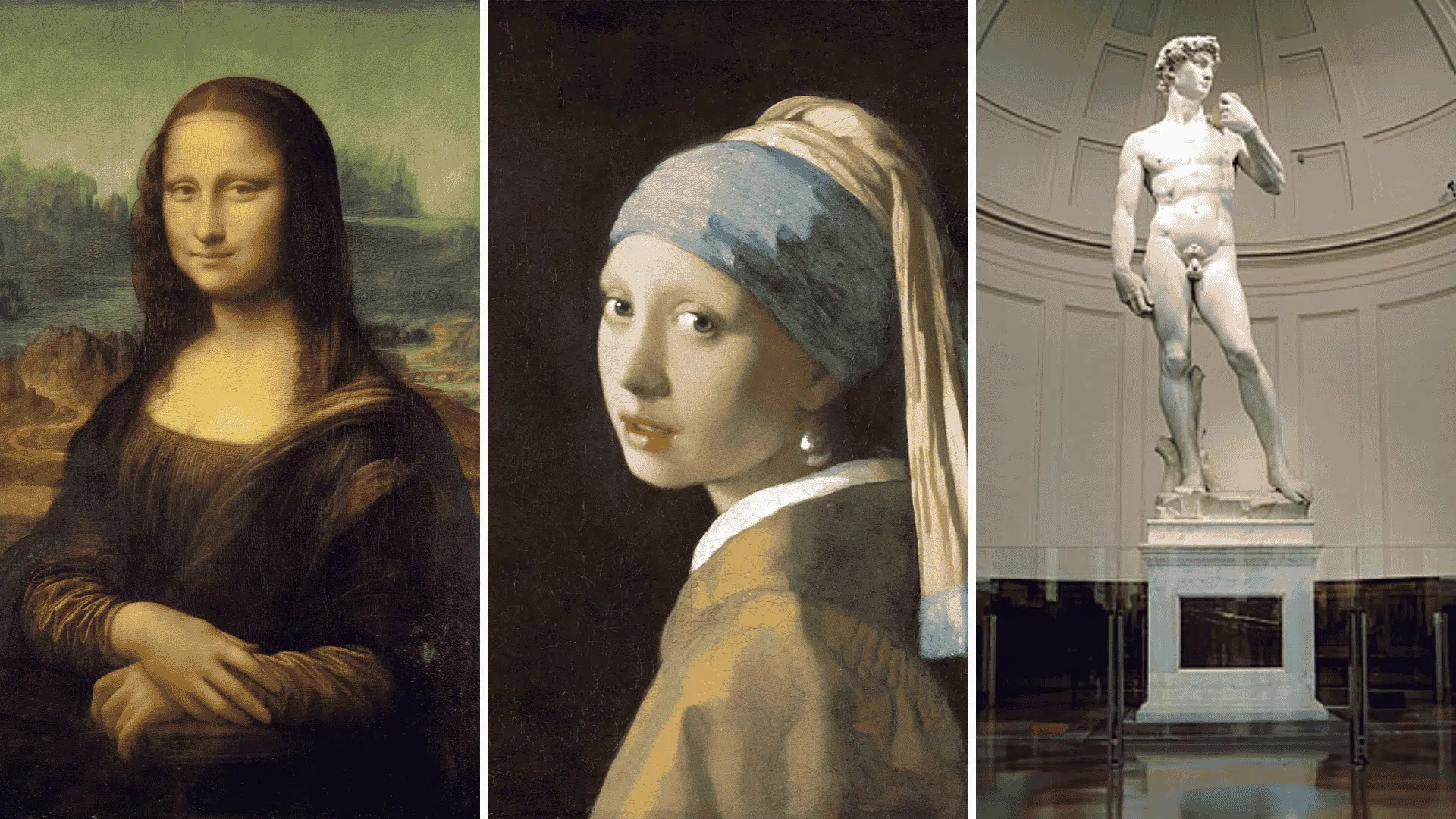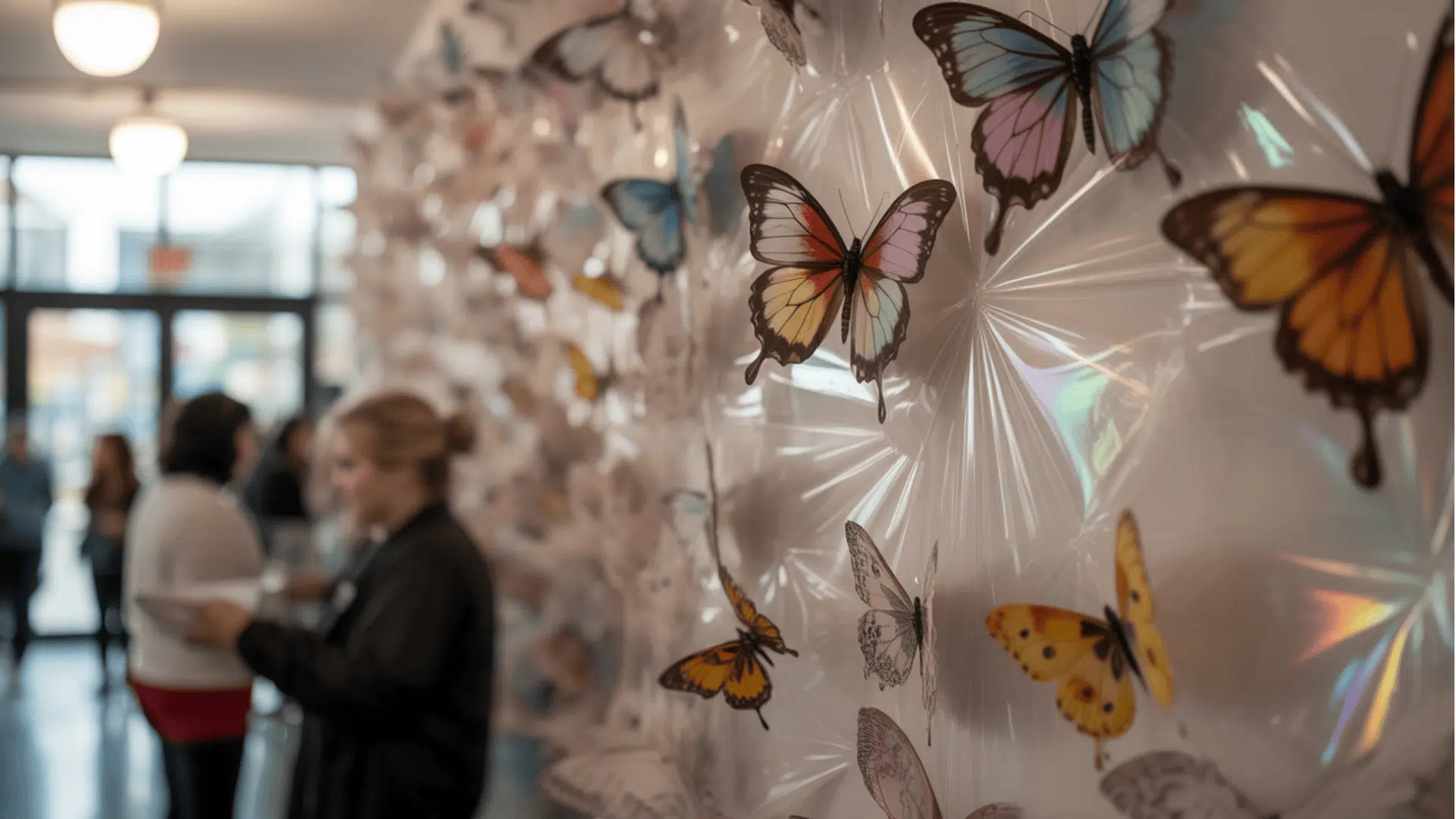What secrets hide behind those colorful walls you pass every day?
Street art uses a complex visual language that is often ignored. Urban graffiti tells stories, marks territory, and showcases talent through the use of symbols and letters.
Some graffiti styles use techniques unchanged since Roman times, while others incorporate space-age technology! They range from simple coded messages to murals rivaling museum masterpieces.
Do you know why some writers risk their lives climbing skyscrapers?
If you’re interested in underground culture, art history, or mysterious town markings, this exploration reveals the hidden world right under your nose.
Let’s decode the streets together!
What is Graffiti Art? A Quick Overview
Graffiti art is a form of colorful artwork created on walls and in public spaces using spray paint and markers.
Artists combine letters, pictures, and bright colors to create everything from quick signatures to detailed murals, transforming city walls into outdoor art galleries.
From quick tags to wildstyle masterpieces, graffiti evolved from subway walls into a global movement — an art of identity, voice, and urban storytelling.
People once thought graffiti was just vandalism, but this perception changed as they recognized the real artistic talent behind it. Now, cities hire graffiti artists to create legal murals, and galleries display their work.
The Foundation: Basic Types of Graffiti
Graffiti art starts with basic forms that shape street culture, from simple tags to bold bubble letters, serving as the foundation for more complex and expressive works.
1. Tags: The Graffiti Signature

Tags, graffiti, pseudonyms, or signatures, often stylized, serve as personal identifiers. They are typically created rapidly using single-color tags to mark territory.
Artists use markers, spray paint, and felt pens for this style. Well-known examples include TAKI 183, Cornbread, and SNAKE-I, who were key figures in NYC’s tagging scene during the 1970s.
2. Handstyles: Artistic Tag Evolution

Handstyles are advanced tags with decorative elements like stars, arrows, and drips. They focus on letter flow and style while keeping the speed of traditional tags.
Handstyles serve as a crucial bridge between simple tagging and more complex pieces, showing artistic growth and personal development.
3. Throw-ups (Flops): Fast and Bold

Throw-ups feature bubble letters with minimal negative space, two-tone fill and outline. This quick method maximizes coverage and readability, perfect for “getting up” culture. Artists like JA One and Oker demonstrated how throw-ups can dominate cityscapes with boldness.
These foundational styles are essential for serious writers, providing skills for advanced artistic expression. Understanding these basics enables refined street art and preserves graffiti’s cultural heritage.
Complex Lettering Styles
Advanced styles push artistic boundaries beyond basic tags and throw-ups, showcasing technical skill and creative vision. These refined forms require years of practice to master, representing the highest levels of street art achievement.
From intricate wildstyle pieces to dimensional lettering, these complex techniques separate experienced writers from beginners in graffiti culture.
4. Wildstyle: Intricate Interlocking Art

Wildstyle is graffiti at its boldest, dense, dynamic lettering that hides meaning in a maze of arrows and forms, rewarding those who take time to decode its art.
Masters like Seen and Dondi pioneered this technique, creating pieces that function as both writing and abstract art through their intricate connections and flowing compositions.
5. Bubble Letters: Rounded Cartoonish Appeal

Bubble letters use rounded, cartoonish forms that appear playful yet bold on urban surfaces. These styles emphasize clean curves and consistent proportions, making letters look inflated like balloons.
While simpler than wildstyle, bubble letters require steady hand control and understanding of letter structure to achieve professional results that stand out in crowded visual environments.
6. 3D Graffiti: Dimensional Depth and Perspective

3D graffiti creates letters and figures with realistic depth and perspective, making flat surfaces appear three-dimensional. These refined styles use shading, highlights, and vanishing points to achieve convincing illusions.
Artists must understand light sources and architectural principles to execute believable dimensional effects that seem to pop off walls and jump toward viewers.
7. Stencil Graffiti: Precision Through Templates

Stencil graffiti uses cut-out templates for precise designs, allowing intricate details and consistent copying.
Artists like Banksy popularized this style, demonstrating that stencils can achieve gallery-worthy results with street credibility and political impact through their clean, professional look.
These advanced styles demonstrate graffiti’s evolution from simple territorial marks to a refined art form. Mastering them requires dedication, practice, and a thorough understanding of both traditional and modern design principles.
Cultural & Hybrid Graffiti Styles
Modern graffiti thrives on fusion, mixing old and new, local culture and bold innovation, it remakes every wall into a canvas of vast possibility.
8. Calligraffiti: Traditional Meets Street

Calligraffiti merges traditional calligraphy with modern graffiti, creating elegant fusion pieces. It combines flowing brushstrokes with spray paint, honoring both ancient writing and street culture.
Artists like eL Seed and Niels Meulman pioneered this movement, proving that graffiti could embrace classical beauty.
9. Heaven Graffiti: High-Risk Artistic Placement

Heaven graffiti involves painting in extremely dangerous, hard-to-reach locations like rooftops, billboards, and bridge spans. These daredevil styles prioritize placement over artistic complexity, with visibility and risk being primary considerations.
Writers who practice heaven spots gain legendary status through their courage, creating pieces that remain untouched due to their inaccessible locations.
10. Roller Graffiti: Large-Scale Letter Systems

Roller graffiti uses paint rollers and extension poles to create massive letters across large wall surfaces. This efficient technique allows artists to cover enormous areas quickly, producing styles that dominate entire building facades.
The method trades detail for scale, creating bold statements that can be seen from great distances while requiring minimal artistic skill.
11. Sticker Graffiti: Portable Street Art

Sticker graffiti involves creating artwork or tags on adhesive labels for quick placement throughout urban environments.
These portable styles allow artists to work safely at home before rapidly deploying their designs across multiple locations.
Artists like Shepard Fairey popularized this approach, demonstrating how stickers could achieve widespread visibility with reduced legal risk.
These innovative styles show how street art continuously adapts to new challenges and opportunities. By embracing different tools and techniques, modern writers expand graffiti’s possibilities while maintaining its rebellious spirit and urban authenticity.
Alternative & Experimental Styles
Innovative artists constantly push styles beyond traditional spray paint methods, experimenting with unconventional materials and techniques. These alternative approaches challenge what defines graffiti while maintaining its core rebellious spirit.
From eco-friendly cleaning methods to high-tech light projections, these experimental styles show graffiti’s endless creative potential.
12. Reverse Graffiti: Eco-Friendly Cleaning Art

Reverse graffiti creates designs by selectively cleaning dirt and grime from surfaces rather than adding paint. This environmentally conscious approach produces styles that reveal hidden beauty beneath urban pollution.
Artists like Moose pioneered this technique, demonstrating how cleaning stencils could create striking images while avoiding legal issues since technically no vandalism occurs through this cleaning process.
13. Etching Graffiti: Permanent Surface Scratching

Etching graffiti involves scratching or carving designs directly into glass, metal, or stone surfaces using sharp tools. These permanent styles create lasting marks that resist removal efforts, making them particularly controversial among property owners.
Train window etching became especially common in subway systems, where writers used keys or specialized tools to create intricate scratched designs.
14. LED Light Graffiti: Digital Projection Art

LED light graffiti uses light projections or long-exposure photography techniques to create temporary luminous designs on buildings and surfaces.
These high-tech styles combine traditional letter forms with modern digital technology, creating spectacular nighttime displays. Artists can project massive images without permanent property damage, opening new possibilities for legal artistic expression in urban environments.
15. Character Graffiti: Cartoon and Realistic Figures

Character graffiti incorporates cartoonish or realistic figures alongside traditional lettering, adding narrative elements to styles. These characters often develop into recognizable mascots associated with specific artists, like Cope2’s bubble characters or Seen’s comic-inspired figures.
Characters help writers develop unique visual identities while making their work more accessible to general audiences who might not read complex letter styles.
These experimental styles show that street art keeps evolving through innovation and technology. By using new materials and techniques, artists expand graffiti’s scope while still emphasizing its role as urban creative expression.
Traditional & Historical Styles
Historical styles trace back to earlier forms of public marking and communication, showing how street art evolved from practical necessity. These traditional methods laid the groundwork for modern graffiti culture and artistic expression.
From hobo train markings to commissioned wall murals, these foundational styles connect contemporary writers to graffiti’s deeper historical roots.
16. Monikers: Railroad Hobo Signatures

Monikers are simple line drawings or signatures traditionally created by hobos on trains and railroad infrastructure. These historical styles served practical purposes, providing information about travel routes, safe locations, and warnings to fellow travelers.
Using chalk, charcoal, or other available materials, hobos developed a communication system that predated modern graffiti culture by decades.
17. Mural Graffiti: Large-Scale Fine Art

Mural graffiti consists of large-scale, often commissioned pieces that resemble traditional fine art murals on building walls.
These refined styles blur the line between street art and accepted public art, frequently featuring realistic imagery, social messages, or cultural themes. Many cities now embrace mural programs, allowing graffiti artists to create legal works that beautify neighborhoods.
18. Wheat Paste Graffiti: Paper-Based Street Art

Wheat paste graffiti involves adhering paper artwork to surfaces using homemade flour-and-water paste as adhesive. This traditional technique allows artists to create detailed styles at home before quickly applying them to walls.
Artists like Shepard Fairey and JR popularized this method, showing how wheat paste could achieve gallery-quality results while maintaining street credibility and accessibility.
By tracing graffiti’s roots, we see it as more than marks on walls; it’s a living language of culture, identity, and ever-evolving expression.
Getting Started: Choosing Your Graffiti Style
Beginning your graffiti venture requires understanding various graffiti styles and identifying techniques that align with your current skill level.
Smart progression from simple forms to complex pieces helps build confidence while developing your unique artistic voice.
- Start with Simple Tags – Master basic different graffiti styles by practicing tags and bubble letters on paper first before attempting complex techniques.
- Practice Legally – Use blackbooks and legal walls to experiment with styles without legal consequences or property damage.
- Study Established Artists – Research legendary writers to understand how styles evolved and learn effective techniques.
- Experiment Gradually – Try various styles, including wildstyle and characters, to uncover your natural preferences and strengths.
- Connect with Communities – Join local groups where experienced writers share knowledge about styles and provide mentorship opportunities.
Remember that developing mastery in different graffiti styles takes years of dedicated practice and experimentation while respecting cultural traditions.
Final Canvas
Graffiti art is way more than just words on walls! From simple tags to complex wildstyle pieces, each graffiti style tells its own story.
If you’re drawn to the flowing letters of bubble style, the sharp edges of blockbuster, or the intricate details of wildstyle, there’s a graffiti technique that matches your creative vision.
Remember, the best graffiti artists started by practicing these basic styles over and over. They studied different techniques, experimented with colors, and developed their own unique voice.
The key is to keep practicing and finding what speaks to you as an artist. Ready to pick up that marker and start your graffiti venture?
Which style will you master first?















